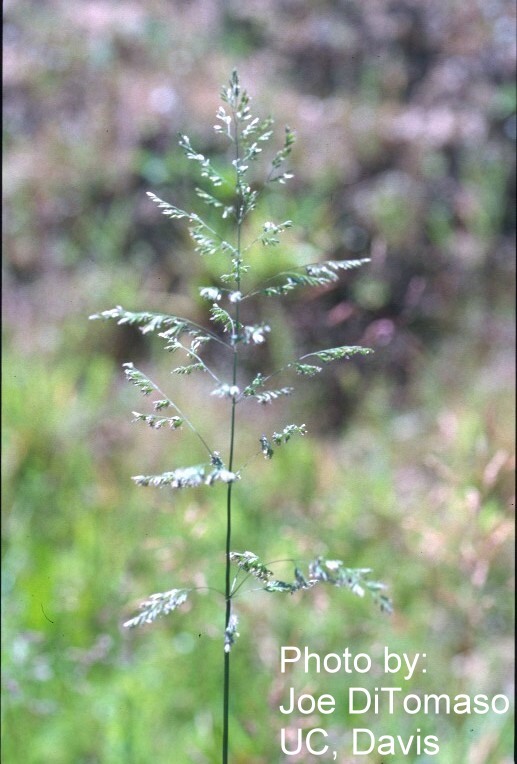Poa arida
Poa trivialis
rough-stalk blue grass
Basal branching intra-vaginal; culms 25-120 cm, decumbent to erect, sometimes trailing and rooting at nodes, terete or weakly compressed;
nodes terete or slightly compressed, 1-3 exserted;
sheaths closed for 1/3 to 1/2 of length, compressed, often densely scabrous, bases of basal sheaths glabrous, distal sheath lengths 0.5-4 times blade lengths;
collars smooth or scabrous, glabrous;
ligules 3-10 mm, scabrous, acute to acuminate;
blades 1-5 mm wide, flat, lax, soft, sparsely scabrous over the veins, margins scabrous, apices narrowly bow-shaped.
Spikelets 2.3-3.5 mm, lengths 3 times widths, laterally compressed;
florets 2-4, bisexual;
rachilla internodes smooth or muriculate;
glumes distinctly keeled, keels scabrous;
lower glumes subulate to narrowly lanceolate, curved, 1-veined, distinctly shorter than the lowest lemmas;
calluses webbed, hirsute, hairs over 2/3 the lemma length;
lemmas 2.3-3.5 mm, lanceolate, distinctly keeled, keels usually sparsely puberulent along 3/5 of length, marginal veins usually glabrous, infrequently the proximal 1/4 softly puberulent, intercostal regions smooth, glabrous, upper lemmas sometimes glabrous, lateral veins prominent, margins glabrous, apices acute;
palea keels smooth, muriculate, tuberculate, or minutely scabrous;
anthers 1.3-2 mm.
Caryopses 1-4 mm, ellipsoid, usually shallowly ventrally grooved, solid;
hilum sub-basal, round or oval, to 1/6 length of the caryopses.
Poa arida
Poa trivialis
- Local floras:
BC,
CA,
OR,
WA
- Local Web sites:
CalFlora,
CalPhotos,
Flora NW,
PNW Herbaria
WildflowerSearch
iNaturalist (observations)
USDA Plants Database
- LBJ Wildflower Center
- SEINet
- Plants of the World Online
- Encyclopedia of Life
- Wikipedia
- Google Image Search


